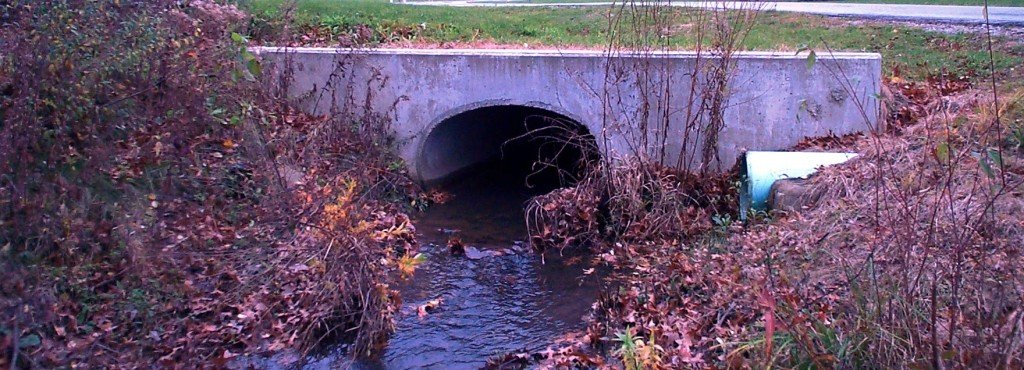Over the last several years, the City of Oberlin has studied the possibility of creating a local Storm Water Utility.
What is a Storm Water Utility?
- A storm water utility is a public utility organized as a separate Enterprise Fund in the same fashion as the City’s other utilities: water, wastewater, refuse/recycling and electric.
- Storm water utilities are responsible for managing system assets including the public storm sewer system, ditches, detention and retention basins and necessary equipment.
- Storm water utilities have local responsibility to manage drainage to mitigate and minimize the potential for flooding impacts (water quantity) and to comply with applicable federal and state laws (water quality).
- Storm water utilities charge user fees to support operations, maintenance, repair/replacement and capital improvements to solve current drainage problems, to prevent future problems and to improve water quality.
- User fees are structured using the “Equivalent Residential Unit” (ERU) approach. This process correlates the costs of operating, maintaining, repairing and improving the storm water system to the stormwater run-off from the impervious surfaces at each developed property.
- User fees accrue in a dedicated Stormwater Enterprise Fund that can only be used for water quality and water quantity management programs and projects.
This presentation to Oberlin City Council at their May 7, 2018 Work Session provides an overview of these planning processes and the current recommendation for implementing a Storm Water Utility in Oberlin:
Storm Water Utility Presentation
Credit Manual for Non-Residential Properties
City of Oberlin Storm Water Management Program
As required by the 1970’s era Clean Water Act, the U.S. Environmental Protection Agency (USEPA) developed the National Pollutant Discharge Elimination System (NPDES) program to regulate point source discharges into the surface waters of the United States. The NPDES program, as initially implemented, was charged with improving water quality by controlling discharges of industrial wastewater and municipal sewage. The NPDES Program has reduced harmful industrial and municipal discharges with resultant improvements in surface water quality throughout the nation.
However, additional point sources of pollution have been identified and, in 1990, USEPA added storm water runoff from major industrial facilities, large and medium municipal separate storm sewer systems (populations over 100,000) and construction sites over 5 acres to the NPDES program. These additions to the NPDES program became known as “Phase 1”. Although the Phase 1 program has been effective, it does not address the broad range of storm water pollution sources. Consequently, USEPA has established an expanded NPDES storm water program (Phase II) which includes regulation of small municipal separate storm sewer systems (MS4s) with populations under 100,000.
Since 2003, the City of Oberlin has been designated a small MS4 operator and, accordingly, has filed for and received NPDES permit coverage of its storm sewer system. A requirement of the NPDES permit is the development and implementation of a storm water management program (SWMP). OEPA requires that each program must contain the following six minimum control measures:
1. Public Education and Outreach programs on storm water impacts on surface water and possible steps to reduce storm water pollution. These programs must be targeted both at the general community and at the commercial, industrial and institutional sectors.
2. Public Involvement and Participation in developing and implementing the storm water management program.
3. Illicit Discharge Detection and Elimination. Location and elimination of non-storm water discharges.
4. Construction Site Storm water Runoff Controls. This control measure requires the use of appropriate Best Management Practices (BMPs), pre-construction review of site management plans, inspections during construction, and penalties for noncompliance.
5. Post-Construction Storm Water Management in new development and redevelopment. Satisfying this control measure requires the adoption of regulations that implement structural and nonstructural BMPs, ensure the long term operation of such BMPs, minimize water quality impacts and maintain predevelopment runoff conditions.
6. Pollution Prevention and Good Housekeeping for Municipal Operations that reduces pollutant runoff. This would include efforts to reduce storm water pollution from the maintenance of streets, parks, vehicles, etc.
For each of these six compliance areas, Public Works staff has assessed current conditions and practices to develop strategies to improve water quality.
The Black River Watershed*

*Source: OEPA, Total Maximum Daily Loads for the Black River Watershed, May 30, 2008
 In 2015, the City elected to develop a broader, watershed-based approach to storm water management by becoming NPDES stormwater co-permittees with the Lorain County Storm Water District. This contractual relationship is a logical and cost effective next step to achieve and maintain compliance with NPDES water quality regulations since the District and the City must meet the same regulatory requirements related to storm water quality.
In 2015, the City elected to develop a broader, watershed-based approach to storm water management by becoming NPDES stormwater co-permittees with the Lorain County Storm Water District. This contractual relationship is a logical and cost effective next step to achieve and maintain compliance with NPDES water quality regulations since the District and the City must meet the same regulatory requirements related to storm water quality.

